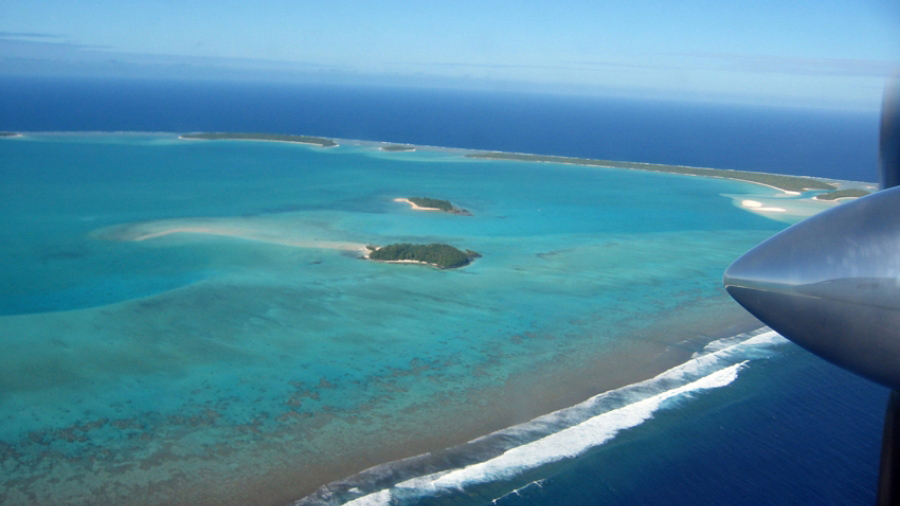Pa Enua population on the decline
Wednesday 26 January 2022 | Written by Rashneel Kumar | Published in National, Outer Islands

PHOTO: SUPPLIED
Depopulation remains an ongoing concern in the Pa Enua with the latest Census data showing a further decline in the population of Southern and Northern group islands.
Preliminary results from the 2021 Census shows a 6 per cent decline in the Pa Enua population, says the Cook Islands Statistics Office.
The Statistics Office has completed the census of the Pa Enua and is now working on completing the survey held every five years, in Rarotonga.
According to Taggy Tangimetua, government statistician and chief electoral officer, the Southern group population (excluding Rarotonga) is down by 7 per cent and there is a decline of 2 per cent in the North when compared to the 2016 Census.
In 2016, the Southern Group islands collectively had a population of 3326 made up of Aitutaki at 1941, Mangaia at 499, Atiu at 434, Mauke at 297 and Mitiaro at 155 people.
A total of 1101 people were counted in the Northern Group on 2016 Census night: Palmerston 58, Pukapuka 444, Nassau 78, Manihiki 212, Rakahanga 83, and Penrhyn 226.
The 2016 figures represent a decline of 7.3 per cent for Southern group islands and 1.1 per cent for the Northern group when compared to the previous Census in 2011.
The total population of the Cook Islands, as enumerated on 1 December 2016, was 17,434 people: 8,520 men and 8,914 women.
Tangimetua earlier said that it was natural to expect a drop in numbers with obvious factors caused by Covid-19 influencing the stats in this year’s census. These factors include migration to New Zealand for work during financial hardship caused by the pandemic and foreign workers repatriated back to their countries, as well as natural changes such as people passing away and new babies being born.
“It is natural to expect a drop in numbers but we will have to wait for proof from the Census,” Tangimetua earlier told Cook Islands News.
According to the 2016 Census report, the Cook Islands population has continuously increased from the beginning of the last century reaching 21,322 in 1971 but declined dramatically during the early 70s, especially between 1971 and 1976, as a result of the opening of Rarotonga’s International Airport in 1974, when many people took the opportunity to migrate to New Zealand.
Between 1986 and 1996, the population slowly recovered and was growing by about 150 people per year. However, since 1996 the population decreased again, especially its resident population.
One contributing factor to this decline was the government’s restructure of the public service in 1996-97 whereby the number of public servants was reduced from 3000 to less than 2000 employees, the report said.
The 2016 Census show nearly 75 per cent (13,007) of the total population lived on Rarotonga.
Tangimetua says most census districts around Rarotonga are covered with the exception of one or two areas in the Nikao, Akaoa, Murienua, Titikaveka and Ngatangiia districts.
“The issue here was, we did not start as scheduled due to some legal requirements brought up by Crown Law that needed to be met. This of course caused the delay in the proclamation of the census that would have allowed us to start on time.”
One of the biggest challenges the Statistics Office faced was the shortage of enumerators, she said.
“While we had a lot of interest when advertised for the positions, the delay in the starting time caused a lot of our enumerators to pull out due to their other commitments and conflicted with the festive season.
“We are going through data cleaning, editing and coding before we can completely finalise the data.
“I am confident that we will wrap up the Census very soon and will start seeing some numbers coming out. We have already shared Census information with critical agencies like Te Marae Ora.”
Between 1986 and 1996, the population slowly recovered and was growing by about 150 people per year. However, since 1996 the population decreased again, especially its resident population.
One contributing factor to this decline was the government’s restructure of the public service in 1996-97 whereby the number of public servants was reduced from 3000 to less than 2000 employees, the report said.
The 2016 Census show nearly 75 per cent (13,007) of the total population lived on Rarotonga.
Tangimetua says most census districts around Rarotonga are covered with the exception of one or two areas in the Nikao, Akaoa, Murienua, Titikaveka and Ngatangiia districts.
“The issue here was, we did not start as scheduled due to some legal requirements brought up by Crown Law that needed to be met. This of course caused the delay in the proclamation of the census that would have allowed us to start on time.”
One of the biggest challenges the Statistics Office faced was the shortage of enumerators, she said.
“While we had a lot of interest when advertised for the positions, the delay in the starting time caused a lot of our enumerators to pull out due to their other commitments and conflicted with the festive season.
“We are going through data cleaning, editing and coding before we can completely finalise the data.
“I am confident that we will wrap up the Census very soon and will start seeing some numbers coming out. We have already shared Census information with critical agencies like Te Marae Ora.”




































